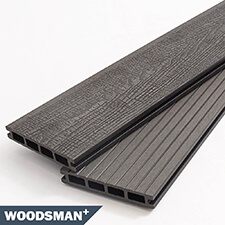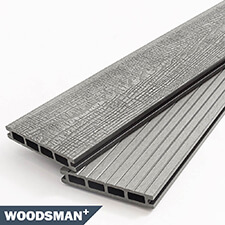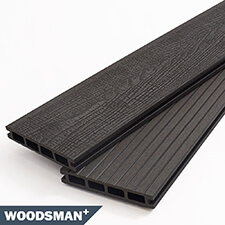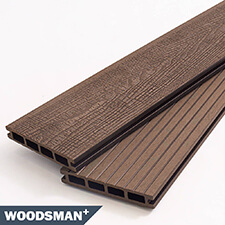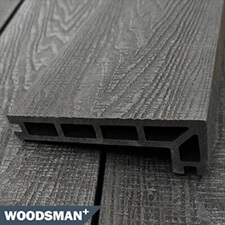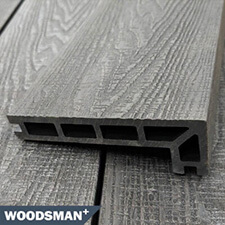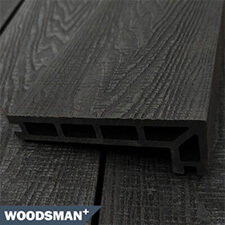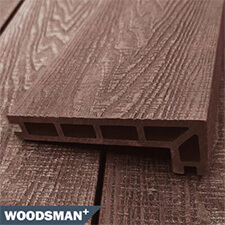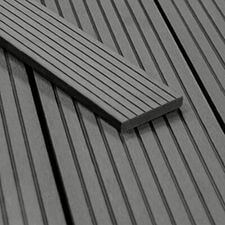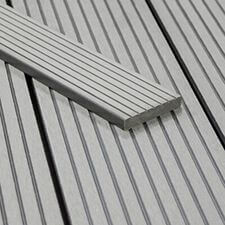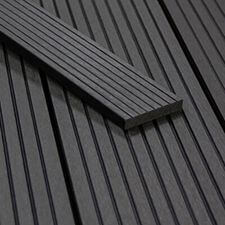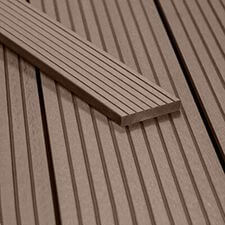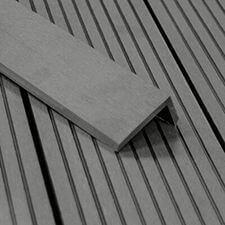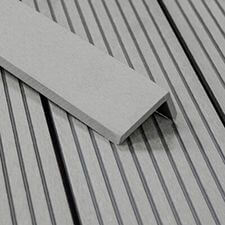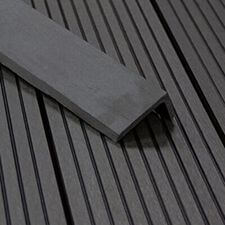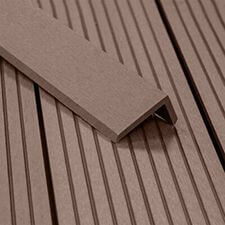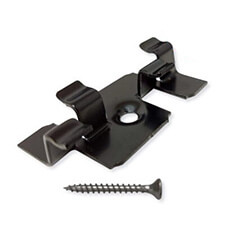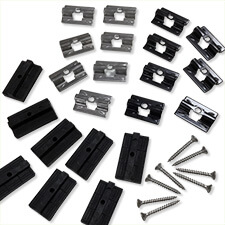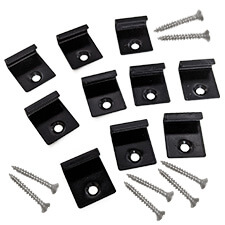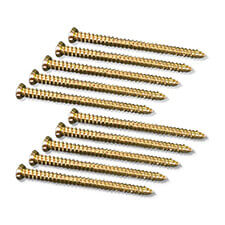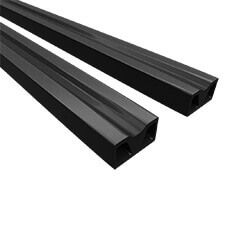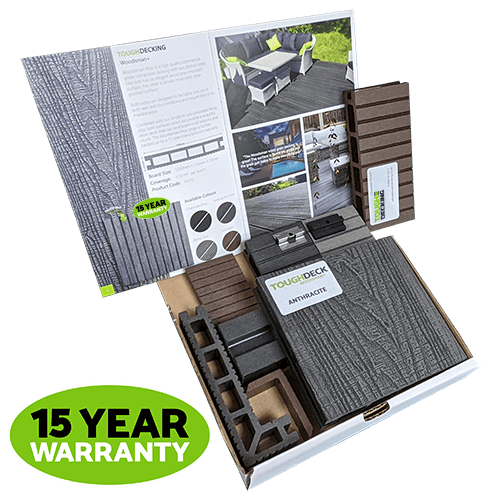No products in the basket.
Tough Decking – Frequently Asked Questions
Our Frequently Asked Questions page is designed to help you find answers to the most common questions regarding the purchase, installation, and ongoing maintenance of Composite Decking.
Although we try to answer every question asked of us, there may be times when your particular installation is far more complicated. In this instance, if you can’t find the answers to your questions here, we advise that you give us a call during office hours to discuss your project.
Filter FAQ’s Categories
Planning & General QuestionsInstallation & MaintenanceWarranty & After Sales SupportShow AllPlanning & General Questions (10)
Composite decking is a type of decking material that is made from a combination of wood fibers or sawdust and plastic. Here are some benefits of composite decking:
- Low Maintenance: Composite decking requires very little maintenance compared to traditional wood decking. It does not need to be stained or sealed and can be cleaned with just soap and water.
- Durability: Composite decking is very durable and resistant to rot, mold, and insects. It can last for many years without the need for replacement.
- Environmentally Friendly: Composite decking is made from recycled materials, making it an eco-friendly option. It also does not require the use of chemicals for maintenance, reducing its impact on the environment.
- Variety: Composite decking comes in a wide range of colors, styles, and textures, making it easy to find a design that matches your preferences.
- Safety: Composite decking is slip-resistant and splinter-free, making it a safer option for families with children and pets.
- Value: While composite decking may have a higher upfront cost than traditional wood decking, it can provide long-term value by lasting longer and requiring less maintenance.
Yes, composite decking has several advantages over conventional wood decking. First, it is highly durable and resistant to rot, decay, and insect infestation. It also requires less maintenance, saving you time and money in the long run.
Second, composite decking comes in a wide range of colors and styles, allowing you to customize your deck to suit your personal taste and preferences. It also has a consistent appearance, with no knots or splinters that can detract from its beauty.
Third, composite decking is made from recycled materials, making it an environmentally friendly option that does not require the use of harmful chemicals for treatment. Finally, composite decking is slip-resistant, even when wet, making it a safer option than conventional wood decking.
Composite decking is typically installed using a combination of screws and hidden fasteners. Here’s a general overview of the installation process:
- Begin by ensuring that the substructure (the framing that supports the deck) is properly installed and level.
- Install a starter strip along the outer edge of the deck to ensure a straight, level surface for the first row of boards.
- Starting at the house, lay the first board with the groove facing toward the edge of the deck. Secure the board to the substructure using T-Clips and screws.
- Install the next board by inserting a T-Clip to the first board and then securing it to the substructure. Repeat this process for the remaining boards.
- Once all the boards are in place, trim the ends to fit the deck’s perimeter and install a finishing board along the outer edge.
- Finally, install any necessary trim pieces or railing systems.
To calculate the approximate number of decking boards required we take the area of each board (150mm width x 2200mm length) which works out to 0.33sqm per board.
Measure the length times the width of your proposed decking area and divide by 0.33.
For example: for a decking area measuring 4m x 5m the total area is 20 m2, if we divide this by 0.33 we get approx. 61 boards. As a general rule, we add 10% for cuts and mistakes, which would take this board total to around 67 decking boards.
Composite decking can be installed by a professional contractor or a skilled DIY homeowner who has experience with construction projects. It is important to follow our installation instructions carefully and use the appropriate tools and materials to ensure a safe and successful installation. In addition, local building codes and regulations should be considered when planning and executing the installation. If you are not experienced with construction projects, it is recommended to hire a professional contractor to install your composite decking.
Composite decking can be relatively easy to install, especially for those with some experience in construction projects. The installation process typically involves cutting the composite decking boards to size, securing them to a substructure or framing, and finishing the edges and corners. Composite decking often features specialised clips or fasteners that help to simplify the installation process and ensure a clean, professional-looking finish. However, the difficulty of installation may depend on the specific product, the complexity of the installation, and the experience and skill level of the installer. It’s important to carefully read and follow our installation instructions and safety guidelines to ensure a successful and safe installation.
A double joist is a type of framing that involves using two joists (horizontal support beams) instead of one to create a stronger and more stable substructure for composite decking. The double joist technique involves spacing the two joists closer together than standard spacing and placing them side by side. The composite decking boards are then secured to both joists, providing additional support and reducing the risk of sagging or warping over time.
The framework of a composite decking installation is important because it serves as the foundation for the entire structure. The substructure or framing provides the necessary support for the decking boards and ensures that they remain level and stable over time. In addition, the framing can help to prevent moisture damage, rot, and decay, which can compromise the structural integrity of the entire installation. Proper framing techniques, including the use of double joists where appropriate, can help to ensure a safe, durable, and long-lasting composite decking installation.
Commercial grade refers to a type of decking product that is designed and manufactured to meet the specific needs of commercial applications, such as parks, hotels, and other high-traffic areas. Commercial grade composite decking typically features a more durable and heavy-duty construction than residential grade decking, with higher load capacities and greater resistance to wear and tear.
Commercial grade composite decking may be made from higher quality materials, such as thicker boards or more advanced polymer composites, and may be subject to more rigorous testing and quality control standards than residential grade products. This can result in a higher price point for commercial grade composite decking, but also a longer lifespan and lower maintenance requirements over time, making it a cost-effective choice for commercial settings.
Uncapped and Capped refer to different types of composite decking products based on their construction and performance.
Uncapped composite decking is made of a composite material that is not covered with a protective coating or shell. This type of decking may be less expensive than capped decking, but it may be more prone to fading, staining, and moisture damage over time. Uncapped decking may also be more susceptible to scratches, mold growth, and other types of wear and tear, as the composite material is exposed to the elements.
Capped composite decking, on the other hand, features a protective outer layer or “cap” that is designed to enhance the durability and longevity of the decking. This cap may be made of a variety of materials, including polymer, PVC, or other synthetic materials, and is designed to resist fading, staining, and moisture damage. Capped composite decking may also be more resistant to scratches, mold, and other types of wear and tear, making it a popular choice for homeowners who want a low-maintenance, long-lasting decking option.
Overall, the choice between uncapped and capped composite decking may depend on factors such as budget, desired level of maintenance, and the specific performance needs of the decking installation.
Here at Tough Decking we pride ourselves on giving excellent customer service. To this end, if you need assistance in planning and designing your decking area please give us a call or send us an email and we will walk you through the steps, and if required provide a FREE no obligation quote.
